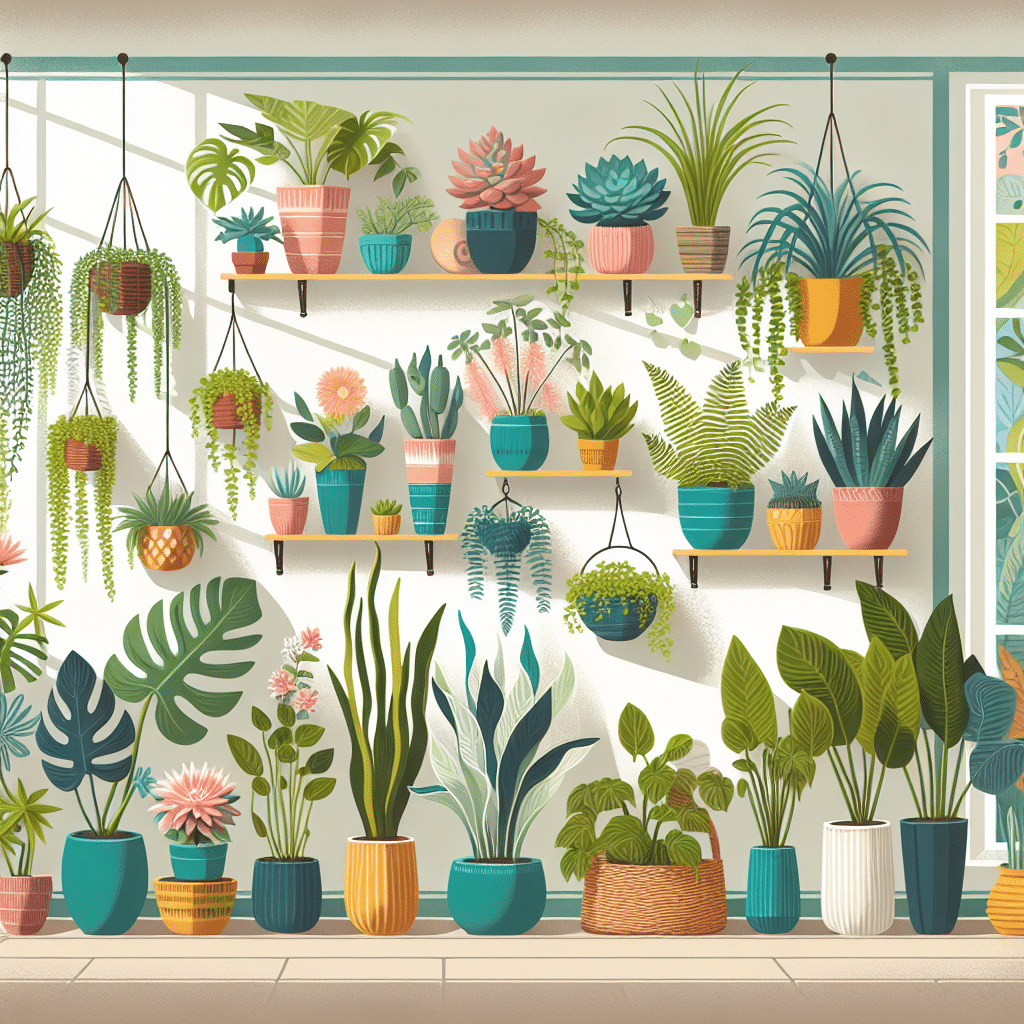Pet-Proof Plant Arrangements: Creating a Safe and Luscious Home
Understanding Pet-Safe Plants
When creating a pet-proof plant arrangement, the first step involves selecting the right plants. Numerous common houseplants can be toxic to pets, causing various health issues upon ingestion. As a responsible pet owner, focus on non-toxic species. Consider the following pet-safe plants:
-
Spider Plant (Chlorophytum comosum)
This resilient plant is safe for pets and thrives in indirect sunlight, making it a delightful addition to any home. -
Boston Fern (Nephrolepis exaltata)
Known for its lush and feathery fronds, Boston ferns add texture and greenery to your space while being harmless to your furry friends. -
Areca Palm (Dypsis lutescens)
An excellent air purifier, the Areca palm brings a tropical feel indoors without posing any danger to animals. -
Bamboo Palm (Chamaedorea seifrizii)
This palm not only enhances your decor but also keeps your pets safe, promoting a lively, healthy environment with its ability to filter toxins. -
African Violet (Saintpaulia)
Brighten up your space with these beautiful blooms. African violets are non-toxic and provide a pop of color without risking your pet’s health. -
Calathea
Known for their stunning leaf patterns, Calatheas are non-toxic and can adapt to a variety of lighting conditions. -
Christmas Cactus (Schlumbergera)
A favorite during the holiday season, the Christmas cactus is safe for pets and offers vibrant blooms in winter months.
Layout and Design Considerations
When arranging your pet-proof plants, consider both aesthetics and practicality. Here are some essential design elements:
Vertical Space Utilization
Using vertical planters or wall-mounted shelves can keep your plants out of reach of curious pets. Not only does this declutter your living space, but it also creates a stunning focal point.
Grouping Plants
Creating clusters of plants can enhance visual appeal while ensuring that the plants are placed at varying heights to keep them safe from pets. Use decorative stands where larger pots can sit atop higher surfaces.
Use of Terrariums
Terrariums can house smaller, non-toxic plants inside a glass enclosure. This not only protects the plants from pets but also creates a mini-ecosystem that is visually stunning.
Maintenance and Care
A pet-friendly plant arrangement requires specific maintenance routines to keep both the plants and your pets safe.
Watering Habits
Choose pots with drainage holes to prevent overwatering, which can lead to root rot and create unsightly messes that attract pets. Self-watering planters can be a practical choice.
Cleanliness
Regularly dust leaves and remove any dead foliage to prevent mold and pests. This practice ensures your plants thrive and maintains a healthy environment for your pets.
Non-Toxic Pest Control
Keep an eye out for pests like spider mites and aphids; consider using natural sprays like neem oil that are safe for pets.
Creating Distinct Zones
To minimize interaction between pets and plants, create distinct zones within your home:
Plant-Free Zones
Designate specific areas of your home where pets are not allowed to access plants. This can involve using gates or specific furniture arrangements.
Safe Perches
Set up plant shelves high enough for plants but just out of reach for pets. Use sturdy wall brackets that can safely hold your potted arrangements.
Pet-Friendly Paths
Create designated paths for your pets to navigate, away from plants. Use pet-friendly materials, such as rugs or mats, that prevent pets from wandering too close to plants.
Choosing the Right Containers
The choice of containers is vital for a pet-proof arrangement. Here are some tips to help you select the best pots:
Heavyweight Options
Select heavier pots to avoid tipping by curious pets. Consider ceramic or concrete options that will remain stable.
Non-Tip Designs
Opt for wider bases or specialized pots designed to resist tipping. Consider adding silicone mats at their base for extra grip.
Aesthetic Cohesiveness
Choose containers that match your home’s decor, combining functionality and style. Textured or patterned pots can add depth while ensuring safety.
Innovative Alternatives
If you’re uncertain about live plants, consider these innovative alternatives that mimic greenery while ensuring safety:
Faux Plants
High-quality artificial plants can brighten your space without the risk associated with live plants. They require no maintenance while adding the visual appeal of greenery.
Botanical Prints
Incorporate botanical wall art to bring the essence of nature indoors. Use various hues and styles to fit your interior design.
Educating Your Pets
For homes with overly curious pets, training can be essential. Implement the following techniques:
Basic Commands
Teach commands like “leave it” to discourage unwanted plant exploration. Reward pets for obeying with treats to reinforce positive behavior.
Supervised Exploration
Supervise your pets when they are around plants. Gradual exposure can help them understand boundaries without creating stress.
Conclusion of Thoughtful Arrangement
Creating a pet-proof plant arrangement requires careful planning, selection, and ongoing maintenance. By choosing non-toxic plants and employing smart design techniques, pet owners can enjoy a lively indoor garden without compromising their pets’ safety. With thoughtful consideration, you can create a beautiful oasis that both you and your pets can appreciate.
